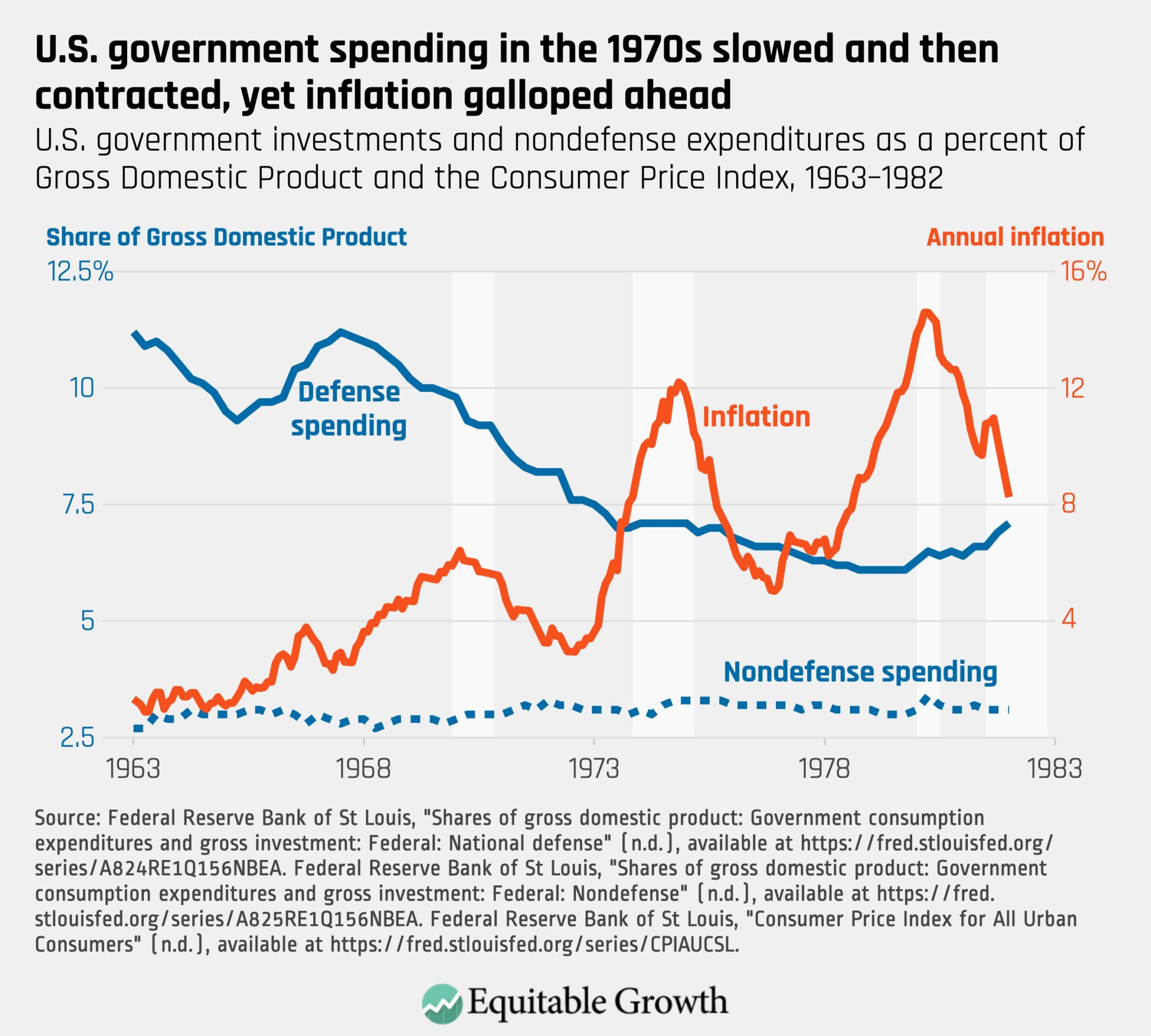This column will walk through this history to demonstrate why the lessons mislearned in the 1970s about austerity policies, if repeated now, could well result in the same inflationary spiral and economic volatility that marked that era in U.S. economic history.
The history of fiscal austerity and monetary restraint as anti-inflation tools
It was the misguided belief that the inflation of the 1970s was, at root, a macroeconomic problem that led the Nixon, Ford, and Carter administrations to restrain government spending. Each of these administrations leaned toward fiscal and monetary contraction to slow rising prices—but it did not work. Fiscal contraction only exacerbated a decade of high unemployment by inducing three recessions and prolonging business uncertainty, while discretionary monetary policy drove wild swings in construction, antagonizing building contractors, homeowners, and workers across the nation. (See Figure 2.)
Figure 2

It is important to emphasize that the federal government’s share of Gross Domestic Product declined persistently throughout the inflationary years of the 1970s. While the defense share of GDP drove the overall decline in the federal share—due to the end of the Vietnam War and détente with the Soviet Union and the People’s Republic of China—this is even true when considering only nondefense expenditures and transfers, which fiscal hawks then, as now, invariably target for criticism rather than defense spending. Indeed, the nondefense share of GDP fluctuated very little during the 1970s. (See Figure 3.)
It was these fiscal austerity drives that created the “stag” in stagflation. This was deliberate policy—and recognized as such at the time. After the 1972 elections, for example, the Nixon administration put an economy-breaking ceiling on federal expenditures, which the Ford administration tried to continue until the 1974 recession forced up unemployment claims.
This was the original “sequestration” move by fiscal-policy hawks—the 1973 “impoundment” of congressionally appropriated funds that the Nixon White House used to starve public institutions across the U.S. economy, long before the 113th U.S. Congress in 2013, led by then-Speaker of the House Paul Ryan (R-WI). Of course, threats by fiscal hawks to shut down the U.S. government to curtail federal spending have been regular features of U.S. politics since the 1990s, as the general decline in the federal tax-revenue share of GDP coincided with skyrocketing U.S. income and wealth inequality.